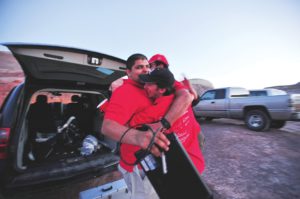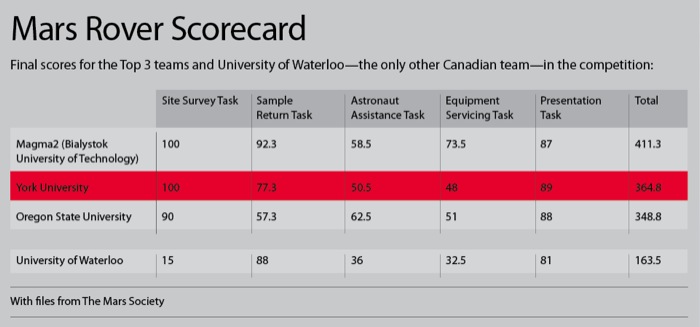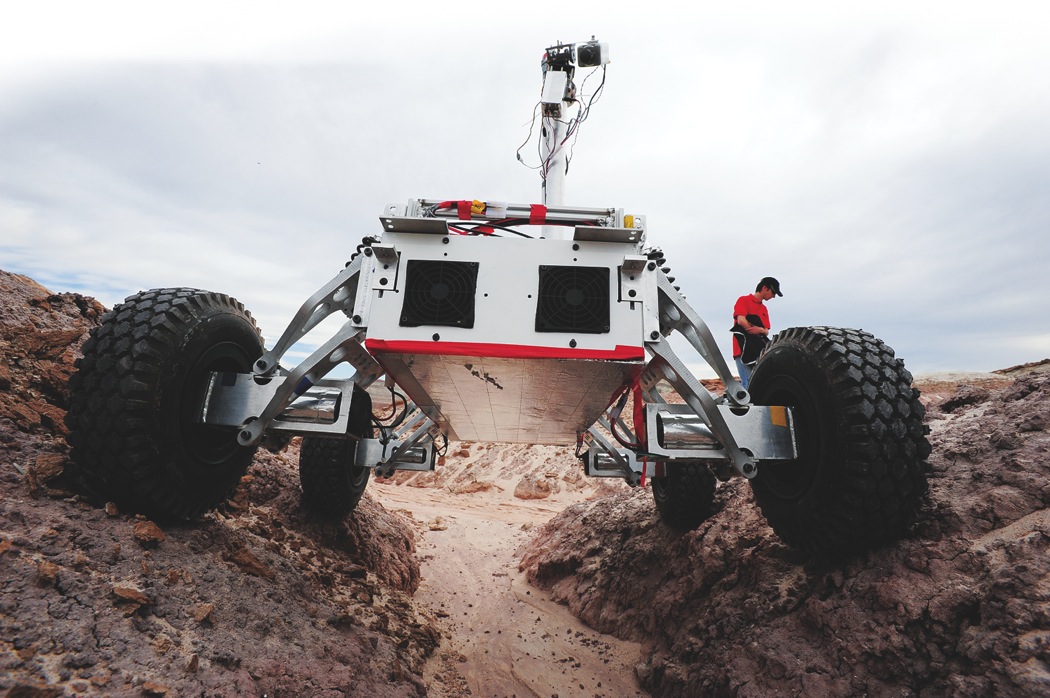Engineering students place second in 2011 University Rover Challenge
Kirk Mason
Contributor
Facing stiff competition and the hot desert sun, York students repeated their second-place victory in an international Mars rover design challenge.
From May 27 to June 5, the York University Rover Team (YURT) headed out to the Utah desert to compete and triumph in the 2011 University Rover Challenge. Competing for the fourth time in the Challenge’s five-year history, YURT’s Mars rover kept the tradition of placing in the top 3—this was the second year in a row that the team took the runner-up spot. Polish students from Politechnika Bia?ostocka placed first this year with Oregon State University students in third.

Mark Post, YURT’s engineering adviser, says that much has changed since the design challenge started. The competition has become “much more professional,” he notes. “As the competition has grown, the teams have grown with it.” The rovers have improved greatly over the past years, Post says. “In my opinion, these [rovers] are NASA quality.”
Post, a PhD student, was the development team leader in previous years and helped YURT win the competition in 2009. His research into space engineering allowed him to become an adviser. He declined to accompany the team to Utah.
“I felt safe staying back and letting the rest of the team go,” Post says. “I had every faith in the team.”
There were five challenges in the competition. First, team members presented the design of their rover. York was the best scoring team in this category, with 89 points out of 100. YURT’s rover received a perfect score in the site surveying task, finding the precise coordinates of field markers. The rover was also judged on its dexterity, its ability to detect bacteria, and its delivery to a “distressed astronaut” out in the mock Martian desert.

According to the team, the suspension system was the rover’s greatest strength. Its superior design got it through a number of the challenges—notably, the surveying task. Another of its strengths was its ability to do on-site testing of samples for the bacteria search test. The rover’s secret weapon, an on-board spectrogram, eliminated any need to retake samples and waste precious time.
Like any space-bound device, the weight of the rover was crucial. The limit for the contest was 15 kilograms—a limit taken seriously by the team and challenge organizers. Organizers reapplied weight penalties in each of the tasks. An important lesson for the real world, where it costs $22,000 to send one kilogram into space.
Post notes that YURT has built a new rover every year, building on the design ideas of past models. The 2008 rover is currently in the Canadian Air and Space Museum at Downsview Park, and the 2009 model will be featured there in the near future. The 2010 model has been re-purposed for special occasions, like cake-cutting ceremonies for its one-year birthday and Jay Ingram’s retirement party for his leave from Daily Planet.
Physics lab technologist Nick Balaskas is enthusiastic about the rover team.
“Students from York—not necessarily from the physics and astronomy department or even from our faculty—come together and use their unique skills,” he says, whether they be business, technical or programming skills. Any student can join because “even if they don’t have skills, they can learn new [ones].”
York is a relatively new university and doesn’t have as many traditions as older institutions. The team’s continuing success might be a sign that this might change. The York University Rover Team is “starting a tradition,” Balaskas says. “A winning tradition.”

YOU SHOULD KNOW
Who York’s rivals are…
– Oregon State University
– Nevada University (no longer participating)
– Politechnika Bia?ostocka
– (Poland)
– UCLA
How much it costs
The Mars Rover EVE, short for Enhanced Vehicle Explorer, costs $13,000
Its good luck charm
EVE had a piece of a Mars rock attached to it for good luck.


